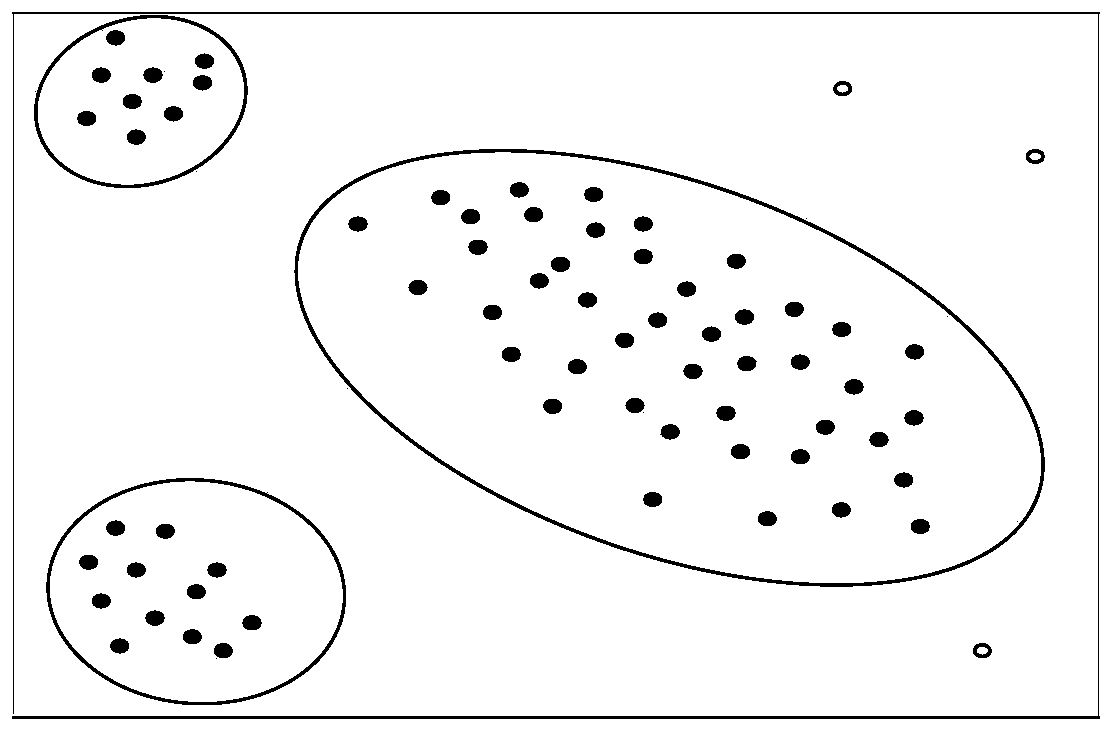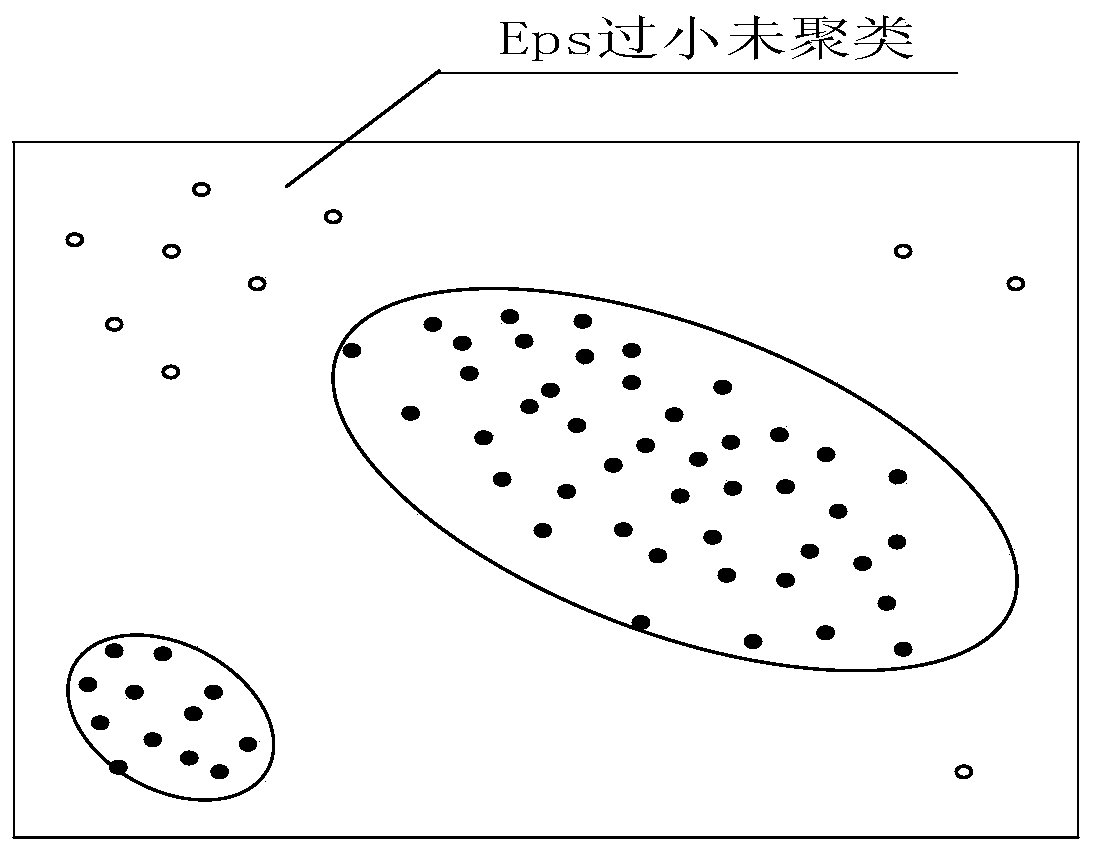Radar multi-target clustering method and device
A clustering method and multi-target technology, applied in the field of radar multi-target clustering methods and devices, can solve the problems of input parameters affecting the clustering effect, point groups cannot complete the clustering, weakening the density distribution, etc., so as to solve the radar scattering target The problem of uneven distribution of points, the effect of improving the clustering effect and reducing the amount of calculation
- Summary
- Abstract
- Description
- Claims
- Application Information
AI Technical Summary
Problems solved by technology
Method used
Image
Examples
Embodiment Construction
[0043] The present invention will be further described below in conjunction with the accompanying drawings and specific preferred embodiments, but the protection scope of the present invention is not limited thereby.
[0044] like Figure 4 As shown, the steps of the radar multi-target clustering method in this embodiment include:
[0045] S1. Area pre-division: Obtain all target points detected in the radar signal to be processed, and pre-divide each acquired target point into multiple areas according to the spatial distribution density;
[0046] S2. Multi-target clustering: According to the distribution state of the target points in each area divided according to step S1, the input parameters for clustering corresponding to the corresponding configurations of each area are respectively, and the input parameters based on the configuration adopt a density-based clustering algorithm respectively Clustering is performed on each region to obtain the output of multi-target cluste...
PUM
 Login to View More
Login to View More Abstract
Description
Claims
Application Information
 Login to View More
Login to View More - Generate Ideas
- Intellectual Property
- Life Sciences
- Materials
- Tech Scout
- Unparalleled Data Quality
- Higher Quality Content
- 60% Fewer Hallucinations
Browse by: Latest US Patents, China's latest patents, Technical Efficacy Thesaurus, Application Domain, Technology Topic, Popular Technical Reports.
© 2025 PatSnap. All rights reserved.Legal|Privacy policy|Modern Slavery Act Transparency Statement|Sitemap|About US| Contact US: help@patsnap.com



